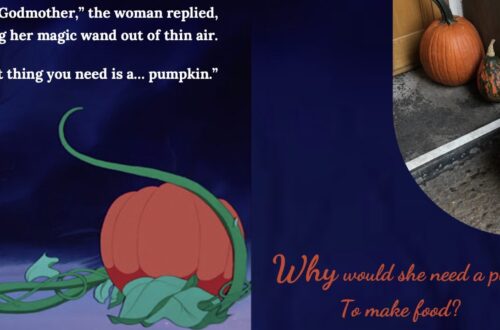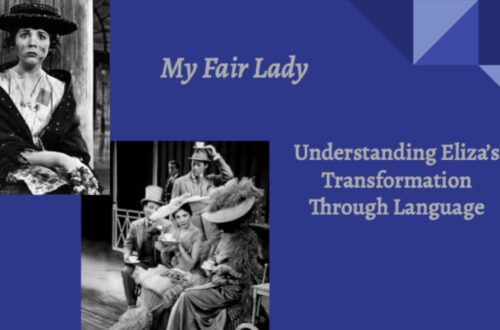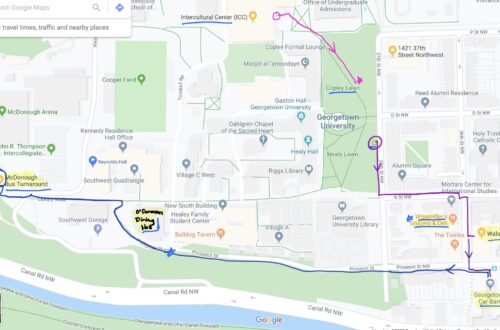Vocal Music Therapy
New York University, 2019. Music Therapy.
In The Theory and Practice of Vocal Psychotherapy (2008), Diane Austin wrote, “No matter what population a therapist works with…and no matter what the therapist’s primary instrument may be, the most healing connections seem to occur through the voice” (p. 19). The effectiveness of using the voice in music therapy has been echoed in much of the literature we have read as our course has progressed, and as a singer, I have found this particularly interesting and encouraging (Austin’s and Acosta’s [2013] research has been especially enlightening).
Some of the reasons working with the voice can be so powerful therapeutically stem from physiological benefits inherent in singing: using one’s own body as the instrument and ‘fueling’ this instrument through breath work. Harnessing the breath has been foundational to ancient mind-body practices like meditation and yoga, and in recent decades, western science has studied the positive effects of diaphragmatic breathing. In interviews with several health professionals, Cuda (2010) summarized that “deep breathing is not only relaxing, it’s been scientifically proven to affect the heart, the brain, digestion, the immune system – and maybe even the expression of genes.” Austin (2008, pp. 24-27), Acosta (2013, p. 222), Iliya (2011), and Bradt (2013) covered further physiological benefits from breathing and singing and discussed breath work with clients. Acosta (2013) also mentioned ways therapists can intentionally manage their own breath when singing with a client to help shape the vocal music therapy environment – adding more breath to the tone for a sense of greater warmth and intimacy or decreasing breathiness to allow a client more space (p. 222).
Sound – and certainly singing – cannot be maintained without regulating the breath; much can be gleaned regarding a person’s inner state by observing their breathing. Austin (2008) noted that the vibrations that resonate in our bodies when singing can release energetic and emotional blockages, and she continued that singing can provide a means to express deep feelings and help us reconnect to our bodies, which is particularly vital when dealing with trauma (pp. 20-26).
Another reason the voice can be so effective in music therapy is that it is inherently personal and primal – something employed since birth and unique to that individual. Iliya (2011) wrote, “Because the voice is our body’s own instrument, self-expression is inherently heightened in all methods using the voice” (p. 19). Acosta (2013) added, “The voice is the closest and most intimate of instruments, as it resonates, literally, within the body. The natural sounds emitted by the voice when made spontaneously, are always truthful expressions” (p. 218). She addressed this in the context of learned inhibitions to freely expressing oneself, particularly in speech, which a person can develop through cultural conditioning.
Austin (2008) and Acosta (2013) both discussed compelling therapy techniques based on vocal improvisation, but I would like to focus on the use of pre-composed music, as this includes elements that I (as a layperson) could apply to my own work in performing and teaching private lessons (particularly concerning repertoire choice; this was elaborated in my first Reflection assignment). We have explored numerous applications of pre-composed music in this course – from parent-selected song of kin lullabies in the NICU (including Loewy’s 2015 article and the television interview highlighting Mondanaro and other music therapists’ work shown during week five’s class) to improved language functioning and well-being in patients with neurologic dysfunction through memories sparked by familiar songs (Loewy, Ard, and Mizutani, 2015).
An essential tenet of music therapy is using music to meet clients where they are – matching what they exhibit in terms of mood, symptoms, and personal or cultural preference, rather than imposing a mood, attitude, cultural bias, or expectation. One of my misconceptions prior to our class was that music would be used to cheer people up. While positive affect may result from receiving music therapy (e.g., reduced pain, improved mood, and/or sense of connection to others from group sessions), this did not arise because the session was focused on making ‘happy’ music or trying to induce feelings of happiness (or any other ‘prescribed’ state) – the scope is much broader. Magee and Baker (2009) wrote, “Emotional wellbeing can be enhanced through providing alternative means for expressing a range of moods including feelings of anger, depression and anxiety” (p. 155). Returning to Austin’s (2008) work, she remarked:
Singing can provide clients with an opportunity to express the inexpressible, to give voice to the whole range of their feelings. Singing meaningful songs often produces a catharsis, an emotional release, due to the effect of the music, the lyrics and the memories and associations connected with the song. (p. 20)
Learning to find and use our voice in the process of individuation can be a goal of music therapy. This was poignantly described in Mondanaro and Loewy (2016), discussing work with adolescents who face additional developmental challenges due to hospitalization and chronic illness (the Group-Song Sensitation case [p 98-99] and discussion of singing as a nurturing intervention for Jessica [p. 100] were of particular interest). Austin (2008) also explored this theme, writing, “The self is revealed through the sound and characteristics of the voice. The process of finding one’s voice, one’s own sound, is a metaphor for finding one’s self” (p. 21). She continued that we often learn to adapt to negative circumstances by stifling our voice, feelings, and needs, and that when we eventually find a place of safety where we could release all of ourselves (as in therapy), we no longer know who we are or how to do so (p. 24).
Music can be the perfect bridge to allow access to and expression of deep feelings and desires, traumas, and other experiences we may not know how to put into words. Iliya (2011) added, “Clients may view expressing themselves using words in music as a nonthreatening way to open up and share feelings” (p. 20). She described that through a song improvisation with Jonathan, “he was able to communicate deeper feelings than I ever heard him verbally discuss, feelings about gaining an identity and moving on after being homeless and hungry. He expressed hope for getting his life back together” (p. 21).
The voice is an equalizer: regardless of socioeconomic, cultural, and other ‘uncontrollable’ factors, each person is born possessing a voice; using it taps into personal strength, and singing together fosters a sense of community and shared purpose.
In certain populations, language can be a barrier to other forms of therapy that music can transcend. Shapiro (2005) described this regarding his work with several groups, including mentally ill homeless men, where low English proficiency made engaging verbally difficult for many. On describing a group intervention involving multicultural music, he stated, “I believe that they would have only been able to have had this kind of integrating personal and social experience in music therapy” (p. 31). By encouraging members to present music from their culture of origin and sing in their native language, both therapist and group members affirmed each other’s identities.
Supporting client-selected music also affirms identity, provides validation, a sense of feeling understood, and promotes trust, which can encourage greater engagement in therapy (music and other types). Pre-composed songs can allow a patient to express ideas and communicate with the therapist without first having to find their own words; this can lead to further dialogue about the client’s specific issues and why that song resonates with them. I particularly appreciated Donnenwerth’s (2012) discussion of these aspects in her article on using rap music with youth offenders. She observed, “Time after time I have witnessed young people put their guard down when they have been validated through their musical preferences” (p. 276). Austin (2008) provided a similar example: “The songs were a catalyst for feelings, thoughts and sensations and a safe way for these girls to begin to put words to their experiences. They slowly began talking about difficult issues, such as what it was like being in foster care” (pp. 182-3). Approaching these often-difficult topics first through music can create an entryway that would not exist, had music not opened the door. Iliya (2011) elaborated on the benefits of vocalizing in particular: “By singing meaningful lyrics, individuals can release emotions and even gain insight from the poetry of the lyrics. The addition of lyrics heightens self-expression and makes vocalizations uniquely different from instrumental music” (p. 16).
Throughout our course, I have been continually amazed to read about music therapy’s profound and far-reaching impacts; I earnestly hope that this field continues to grow and become increasingly accessible, so many more people can find relief and pleasure through it. Learning more about the potential of voice work (particularly in Austin’s [2008] book) has made me appreciate and respect my own gifts – as well as the support and circumstances that have enabled me to develop my inherent abilities – even more deeply. Whether or not I pursue a career in music therapy someday, I desire to learn more, to incorporate what I can into my work where possible, and to share an awareness of music therapy with others. The most immediate way I can do this is in shaping an upcoming performance for an audience of primarily homeless individuals based on their songs of kin (detailed in Reflection 2). I hope this music will help us to connect and share in a way that communicates that they matter; that I see them; that they are loved and valuable; and that hope is possible.
.
Bibliography
.
Acosta, M. (2013). Improvisational singing: A Nordoff-Robbins based approach to vocal music therapy intervention in the treatment of pain. In J. Mondanaro & G. Sara (Eds.). Music and medicine: Integrative models in the treatment of pain (pp. 215-234). New York, NY: Satchnote Press.
Austin, D. (2008). The theory and practice of vocal psychotherapy. London, UK: Jessica Kingsley Publishers.
Bradt, J. (2013). Music entrainment for breathing regulation. In R. Azoulay & J. Loewy (Eds.). Music, the breath, and health: Advances in integrative music therapy (pp.11-20). New York, NY: Satchnote Press.
Cuda, G. (2010). Just breathe: Body has a built-in stress reliever. Retrieved from https://www.npr.org/2010/12/06/131734718/just-breathe-body-has-a-built-in-stress-reliever
Donnenwerth, A. M. (2012). Song communication using rap music in a group setting with at-risk youth. In S. Hadley & G. Yancy (Eds.). Therapeutic uses of rap and hip-hop (pp. 275-292). New York, NY: Routlage.
Iliya, Y. A. (2011). Singing for healing and hope: Music therapy methods that use the voice with individuals who are homeless and mentally ill. Music Therapy Perspectives, 29 (1), 14-22.
Loewy, J. (2015). NICU music therapy: Song of kin as critical lullaby in research and practice. Annals of the New York Academy of Sciences, doi: 10:111/nyas:12648, 84-86.
Loewy, J., Ard, J., & Mizutani, N. (2015). Music therapy in neurologic dysfunction to address self-expression, language, and communication: The impact of group singing on stroke survivors and caregivers. In L. Carozza (Ed.). Communication and aging: Creative approaches to improving the quality of life (pp. 269-299). San Diego, CA: Plural Publishing.
Magee, W. L., & Baker, M. (2009). The use of music therapy in neuro rehabilitation of people with acquired brain injury. British Journal of Neuroscience Nursing, 5 (4), 150-156.
Mondanaro, J., & Loewy, J. (2016). Music therapy with adolescents in medical settings. In J. Edwards (Ed.). Oxford handbook of music therapy (pp. 80-111). Oxford, UK: Oxford University Press.
Shapiro, N. (2005). Sounds in the world: Multicultural influences in music therapy in clinical practice and training. Music Therapy Perspectives, 23 (1), 29-35.


